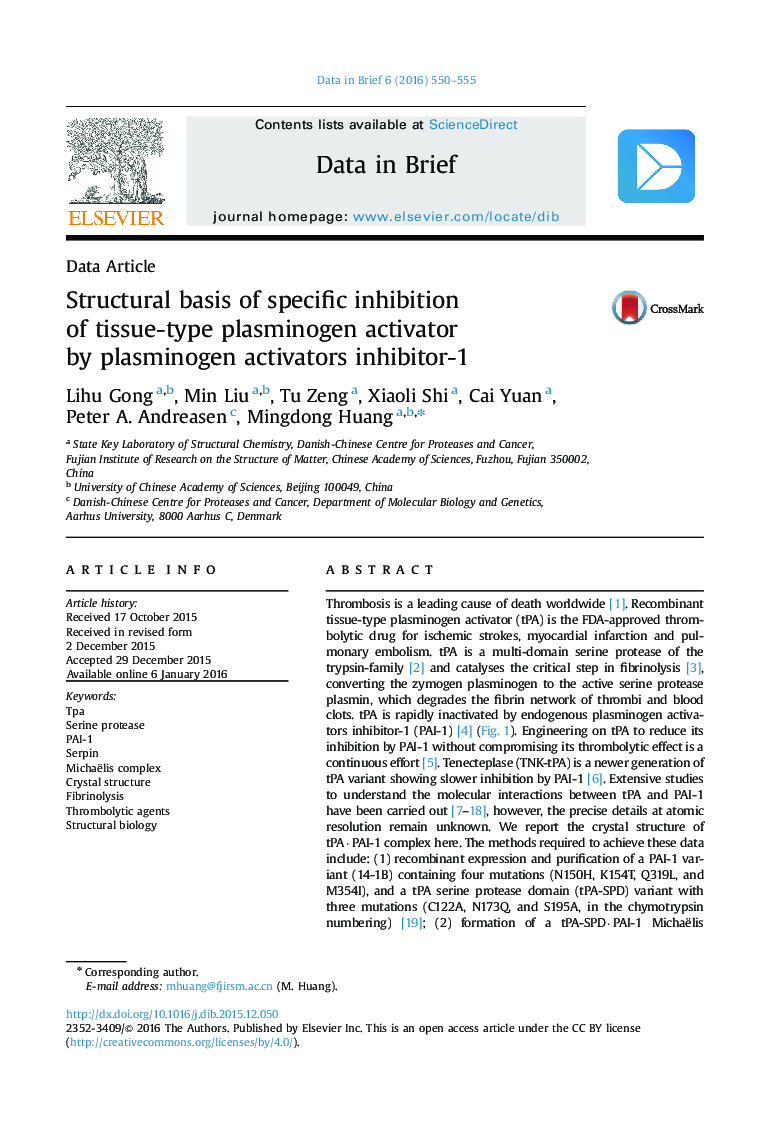| Article ID | Journal | Published Year | Pages | File Type |
|---|---|---|---|---|
| 175000 | Data in Brief | 2016 | 6 Pages |
Thrombosis is a leading cause of death worldwide [1]. Recombinant tissue-type plasminogen activator (tPA) is the FDA-approved thrombolytic drug for ischemic strokes, myocardial infarction and pulmonary embolism. tPA is a multi-domain serine protease of the trypsin-family [2] and catalyses the critical step in fibrinolysis [3], converting the zymogen plasminogen to the active serine protease plasmin, which degrades the fibrin network of thrombi and blood clots. tPA is rapidly inactivated by endogenous plasminogen activators inhibitor-1 (PAI-1) [4] (Fig. 1). Engineering on tPA to reduce its inhibition by PAI-1 without compromising its thrombolytic effect is a continuous effort [5]. Tenecteplase (TNK-tPA) is a newer generation of tPA variant showing slower inhibition by PAI-1 [6]. Extensive studies to understand the molecular interactions between tPA and PAI-1 have been carried out [7], [8], [9], [10], [11], [12], [13], [14], [15], [16], [17] and [18], however, the precise details at atomic resolution remain unknown. We report the crystal structure of tPA·PAI-1 complex here. The methods required to achieve these data include: (1) recombinant expression and purification of a PAI-1 variant (14-1B) containing four mutations (N150H, K154T, Q319L, and M354I), and a tPA serine protease domain (tPA-SPD) variant with three mutations (C122A, N173Q, and S195A, in the chymotrypsin numbering) [19]; (2) formation of a tPA-SPD·PAI-1 Michaëlis complex in vitro [19]; and (3) solving the three-dimensional structure for this complex by X-ray crystallography [deposited in the PDB database as 5BRR]. The data explain the specificity of PAI-1 for tPA and uPA [19] and [20], and provide structural basis to design newer generation of PAI-1-resistant tPA variants as thrombolytic agents [19].
